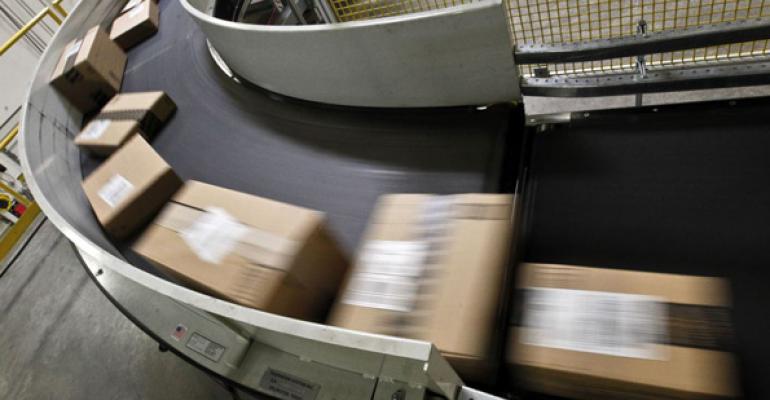Of the $500 billion in online U.S. sales last year, $75 to $150 billion worth of merchandise was returned, including $37 billion returns from holiday sales, according to a recent reverse logistics report from commercial real estate services firm CBRE. In fact, returns for online sales tend to be two to three times more frequent than returns for in-store sales: 15 percent to 30 percent of online purchases are returned compared to 8 percent of merchandise bought in-store.
A large number of these returns can be attributed to retailers sending customers the wrong size or wrong product, or giving an inaccurate description of the product, as well as product defects. Regardless of the reason, however, returns put enormous stress on the already tight warehouse space, labor and distribution networks that are not designed to handle reverse flow inventory and are eating up retailer profits, notes David Egan, CBRE global head of industrial & logistics research.
Returned merchandise that is then sold at a discount or discarded costs retailers an estimated 4.4 percent of total revenue annually, according research firm IHL Group. The devaluation cost of returned items is more difficult to quantify. The CBRE report explains that the longer an item stays out of inventory and unavailable for sale, the lower its value. Devaluation fluctuates depending on the product type, but the CBRE report notes that Optoro, a reverse logistics software and services firm, estimates depreciation value of electronics at 4 to 8 percent per month and of apparel at 20 to 50 percent over eight to 16 weeks, depending on the discount or markdown strategy.
An Amazon spokesperson tells NREI, “Once we receive a returned product we conduct a thorough inspection to determine if it can be sold to another customer as either ‘new’ or ‘used.’” She says that for used items, necessary steps are taken to ensure the quality of products sold.
However, according to Egan, “The bottom line is the volume of returns needs to go down to get the returns flow under control.” He notes that retailers continue to offer customers an easy return process, but are implementing various strategies to reduce the volume and/or cost of returns.
The best opportunity to reduce the rate of returns is with better management of the sales channel, Egan notes. “If customers have to pay the cost for returning merchandise, they will think twice about doing it.” Without the physical experience of seeing, touching or trying on an item, e-commerce shoppers are accustomed to buying multiple items with the intent of returning some of them, he says.
Retailers are reluctant to impose a stricter return policy, as in a 2018 JDA Consumer Survey, 86 percent of shoppers cited ease of returns—and inexpensive or free returns—as a top factor in deciding where to buy, and 81 said they will shop somewhere else if dissatisfied with the return process.
Bricks-and-mortar stores have a decided advantage over pure e-commerce retailers because they can handle returned items at a lower cost and quickly return merchandise to inventory by encouraging e-commerce customers to drop off returns in stores, Egan says.
Walmart, which has about 4,700 stores within five miles of 95 percent of the U.S. population, for example, offers e-commerce customers free returns regardless of the reason, if dropped off at a store location.
Furthermore, in-store returns increase store foot traffic. According to the ICSC, an item returned in a store results, on average, in an additional sale that is 107 percent of the value of the returned item.
Amazon offsets free shipping and returns for its 100 million Prime customers with an annual membership fee of $119. But with escalating shipping costs, the e-commerce giant partnered with department store chain Kohl’s to handle its returns and reduce costs.
This was a “win-win” for both Amazon and Kohl’s, according to Gregory Healy, senior vice president of supply chain and logistics consulting with real estate services firm Colliers International. This back-store operation occupies extra space in downsized Kohl’s stores and increases in-store shoppers, while saving Amazon a bundle on shipping, labor and distribution space for processing returns.
The growing downside of returns for e-commerce retailers has an upside for industrial real estate developers and investors. “Processing returns is a messier and less efficient system than deliveries,” Egan says. “It is fairly manual and doesn’t happen in a consistent way.”
Reverse logistics require about 15 to 20 percent more space than traditional outbound supply-chain facilities, according to Optoro. That’s because return processing requires additional people to manually unpack, inspect and restock for discarded items, notes Egan.
To improve return efficiency, 3LPs and some larger retailers are expanding supply-chain networks or building separate supply chains for reverse logistics. This has created opportunities to develop enormous, purpose-built warehouses with layouts designed specifically for processing returns, Egan says.
Retailers with a less robust supply chain network are opting to outsource some, if not all, of the reverse logistics process to 3PL firms, reports CBRE. Retailers will continue to make inventory management decisions, but 3PLs will oversee collection and handling of returned goods.
This is resulting in another growth area for industrial real estate operators, as 3PLs are becoming a major driver of industrial space demand. Third-party logistics providers now occupy an estimated 700 million sq. ft. nationwide, and their footprint is growing by 3 to 5 percent annually.





